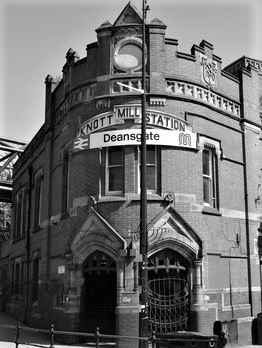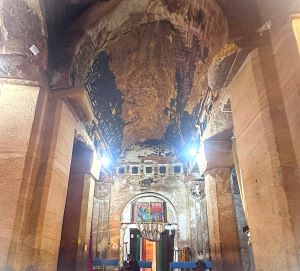M Womersleys have just completed mortar analysis from samples provided from Deansgate Station in Manchester.
M Womersleys have just completed mortar analysis from samples provided from Deansgate Station in Manchester. The station was opened as Knot Mill and Deansgate on 20 July 1849 by the Manchester, South Junction and Altrincham Railway near the Manchester terminus of the Bridgewater Canal from which in 1849 travellers could catch a fast packet which could get them to Liverpool in four and a half hours for as little as sixpence.

A public meeting in October 1884 complained that Knott Mill station was altogether inadequate for the newly improved district. Work started in March 1895 and was completed in September 1896; the latter year appears (in a shield) as part of the decorative stonework over the entrance. The station name is given there as simply "Knott Mill Station". The station is now a Grade II listed building. Its battlemented architectural feature, visible at its corner, is intended to mirror similar features in the nearby viaducts, all of which in turn incorporated the design in recognition of the Roman fort that once stood in the Castlefield area.
The mortar from various locations within the station area, which may date the late 19th century improvements was a lime rich early cement ash mortar. Ash being readily available waste product from the Victorian Period onwards. From the nature of the binding matrix of the mortar sample and from information gained from the analysis it is probable that the mortar was made up by volume from a combination of 1 part roman or early dicalcium silicate rich cement: to 2 parts ash which included within it a small amount of fine quartz sand.
Related Articles

On Sunday, March 16th, why not come for a full introduction to lime plastering and a practical demonstration workshop?
Learn more about traditional clay, lime, and ornamental gypsum plasters and their use internationally…

Proposals to carry out a conservation assessment at Wukro Cherkos, with a full training programme for recent graduates from Mekelle University and government bodies responsible for regional conservation work.
Introduction In response to continued concerns about the condition of one of Tigray’s most well…

Report on the support given by M Womersleys to Jabir Mohamed at Berbera Museum, Berbera, Somaliland, over two weeks from the end of October 2024
Contents …